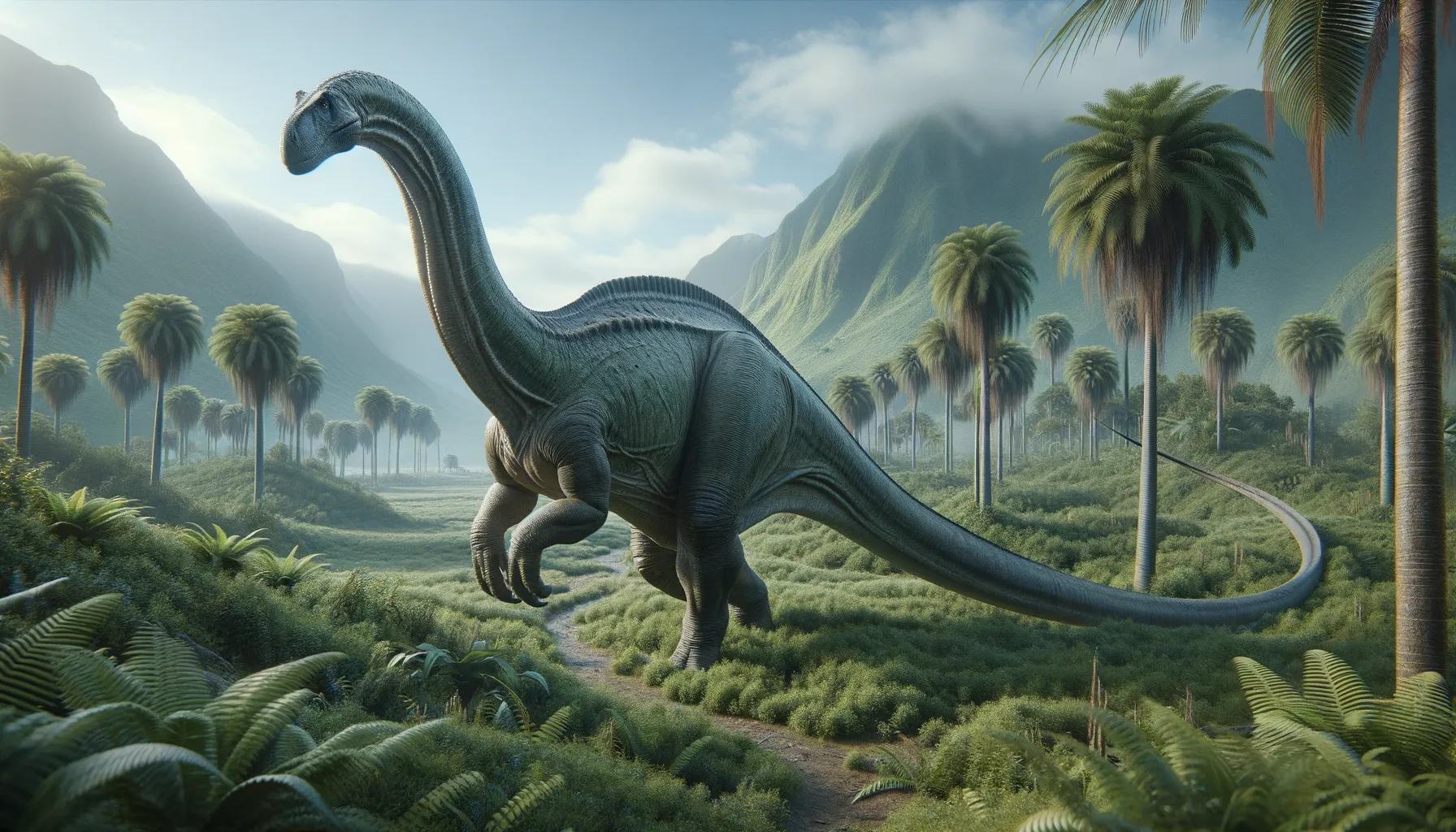
Qinlingosaurus
A giant of ancient China.
Period
Cretaceous
Length
Around 15 meters long.
Height
Reaching up to 5 meters at the shoulder.
Weight
Approximately 20 tons.
Qinlingosaurus was a large, herbivorous dinosaur known for roaming the land millions of years ago during the Cretaceous period. With its massive build and long neck, it grazed the lush vegetation of its habitat. Belonging to the family of sauropods, these were one of the most significant land animals to have ever existed. Though its fossils are unique to China, they offer glimpses into a world long gone.
Diet
Qinlingosaurus was primarily herbivorous, feeding on the abundant vegetation of its time. Its diet likely consisted of leaves, ferns, and other plant materials that were plentiful during the Cretaceous period.
Hunting
As a herbivore, it did not hunt for prey. Instead, it would roam vast areas to find and consume vegetation. Its long neck would have allowed it to reach high into trees for foliage.
Environmental challenges
Qinlingosaurus faced environmental challenges such as climate fluctuations and habitat changes during the Cretaceous period. These challenges required adaptation in their feeding habits and migration patterns. Natural predators also posed a threat, making young individuals particularly vulnerable until they reached a protective size.
Speed
Qinlingosaurus was relatively slow-moving.
Lifespan
Estimated to live several decades.
First discovery
Discovered in the Qinling Mountains, China.
Fun Facts
- Qinlingosaurus is named after the Qinling Mountains in China where its fossils were first found.
- This dinosaur lived during the Late Cretaceous period, around 72 to 66 million years ago.
- Qinlingosaurus was a type of sauropod, known for its long neck and tail, and massive body.
- Although its fossils are limited, it is believed that Qinlingosaurus might have been as long as 20 meters (about 66 feet).
- The diet of Qinlingosaurus likely consisted of plants, as it was a herbivore.
- Qinlingosaurus is part of the Titanosauria group, which includes some of the largest land animals to have ever existed.
Growth and Development
Qinlingosaurus would hatch from eggs, growing rapidly in its early years to reach a size that discouraged most predators. As it matured, its growth would slow down, adapting to its environment's resource availability. Social behaviors might have facilitated communal protection, especially among the young, which helped survival.
Habitat
It lived in what is now China, a region that during the Cretaceous was lush with vegetation. The area would have been rich in rivers and lakes, providing both hydration and an abundance of food. Seasonal changes could lead to migrations as the dinosaur moved with the availability of food sources.
Interaction with other species
Qinlingosaurus likely coexisted with various other species, including smaller herbivores and potential predators. It may have competed for food with other large herbivores. Its size and group behavior possibly offered some protection against apex predators of the time, which may have preferred easier targets.
Natural lifespan
Naturally, it could live several decades if it avoided predators.
Reproduction
Reproduction involved laying eggs in nests, possibly communally for protection. This would ensure a higher survival rate for the young, who would stay near adults for security. Gestation periods were likely prolonged, aligning with patterns seen in other large dinosaurs.
Social behaviour
It is believed to have lived in groups, which offered protection and facilitated social learning among younger members. Such behavior could also assist in teaching survival tactics and help in raising offspring communally.
Fossil locations
Fossils of Qinlingosaurus have primarily been found in the Qinling Mountains of China. The region offered a treasure trove for paleontologists due to its rich deposits of Cretaceous fossils. These finds have helped build a clearer picture of the dinosaur's physiology and its environment during its time.
